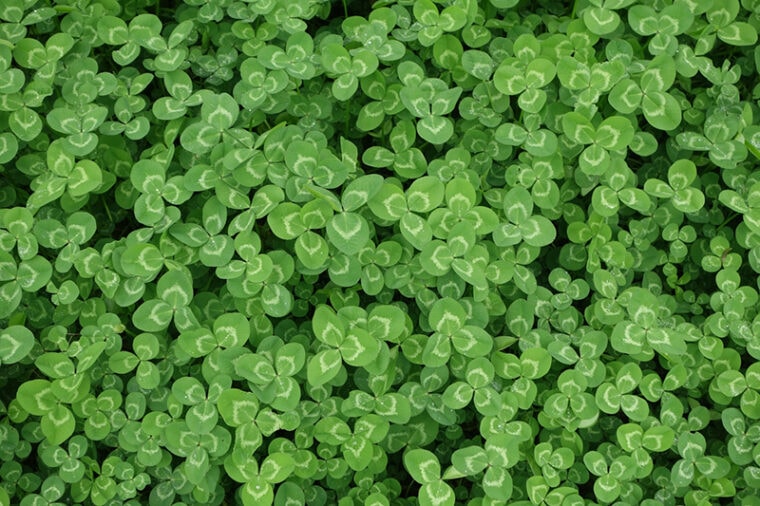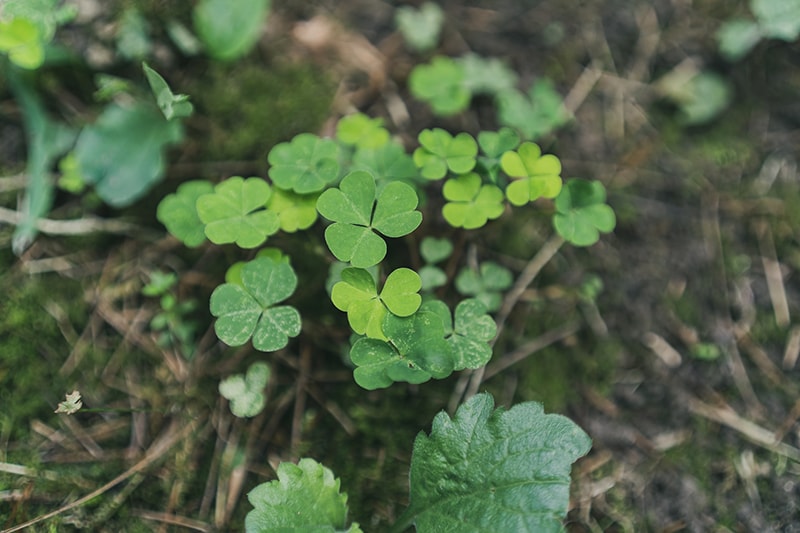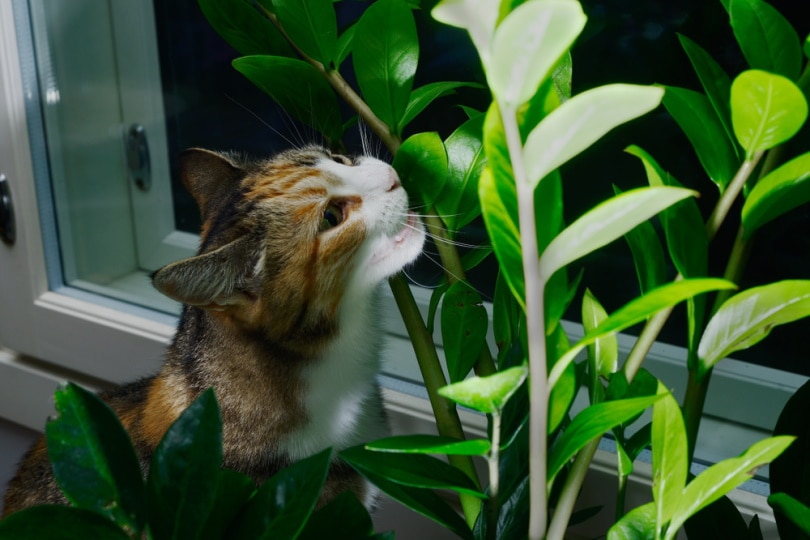
Cats are amazing companions, even if they can be a bit naughty. If you’ve had a cat in your home, you know how difficult it is to keep them away from something, particularly if it’s something bad for them. One thing that seems to attract most cats’ attention is plants. Whether they are outside and on the prowl, or in the house eyeing your potted plants, swiping, nibbling, and investigating are part of a cat’s normal day.
If you ask, can cats eat clover? The answer is that it depends on the type of clover. Unfortunately, there are plants out there that are dangerous for our kitties, and some types of clover are definitely toxic to cats.
Let’s take a deeper look at cats and clover so you know which types of clover are safe and which may potentially harm your kitty if you see them munching on clover in your lawn or garden.
What Is Clover?
Before we get into the ins and outs of whether cats can eat clover, it’s important to note that there are different types of clover. When we think of clover, we usually think of the shamrock type of clover that has three leaves and is used as a symbol of Ireland and St. Patrick’s Day. This type of clover is actually an Oxalis species, and is not in the same family as other types of clover.
However, what many people sometimes refer to as a shamrock is actually a true species of clover called white clover. White clovers are in the genus Trifolium. White clovers also have three leaves, causing many people to think that they are shamrocks. However, they also produce white fluffy-looking flowers. So even though white clovers look like shamrocks when it comes to their foliage, they are actually two separate species, which is important to distinguish.
Another type of clover is a red clover. Red clovers are also in the genus Trifolium and produce fluffy flowers that look similar to the flowers produced by white clover. However, the flowers are red or pink instead of white. The foliage also looks different, and not the like the foliage of a white clover or shamrock.
There are other types of clover in addition to these, but white clover and red clover is what you are most likely going to see your cat munching on in the yard.

Is All Clover Toxic to Cats?
Shamrocks are the first thing we think of when someone mentions clover. Yes, shamrocks are toxic to cats. Every part of the plant, including the stem, can affect your kitty. As a member of the Oxalis genus, shamrock plants contain calcium oxalates which can bind to the calcium already in a cat’s bloodstream. This will eventually make its way to your cat’s urinary tract as calcium oxalate crystals. This results in bladder stones and kidney infections for your kitty. Unfortunately, there are other issues this lack of calcium caused by clovers will result in.
However, there is very little information out there to suggest that white or red clover is toxic to cats. The leaves of white clover contain glycosides, which may harm your cat in very large quantities. But your cat eating one white clover in the backyard isn’t going to cause your cat any harm. Red clovers are also not known to cause any toxicity to cats.
Shamrock Toxicity in Cats
If your cat eats some of the shamrock plant, they may not experience any signs of toxicity.
Take your cat to the veterinarian if you notice any of the above signs after your cat eats a shamrock plant.

Kidney Failure
Unfortunately, shamrock toxicity can also lead to kidney failure in your cat. If your cat’s kidneys cannot remove the toxins, they will begin to shut down. These cases are rare, but it’s important to know what to look for so you can get your cat the help it needs.
What Happens If My Cat Eats Clover or Shamrocks?
Eating white or red clover may not cause your cat to show any signs, although they may vomit if the clover is hard for them to digest. This isn’t usually a sign of toxicity though, especially if your cat only ate one white or red clover. Cats sometimes just have a hard time digesting plant matter since they are obligate carnivores and their bodies are designed to eat and digest mostly meat.
Shamrock poisoning isn’t as common as you’d think. Cats have a way of steering clear of many dangerous plants they encounter. Not to mention, the bitter taste may keep them from eating a lot of it. If your cat is caught eating these plants, and their kidneys are healthy, they may pass the toxins without too much issue. Still, your veterinarian needs to be contacted if they are showing any signs of toxicity.
If possible, tell them how much your cat ate and how long ago it happened. Even if your cat isn’t showing signs, the veterinarian will know your cat’s health status. This will help them decide whether your kitty should come in for an evaluation or if the situation can be monitored from home.
Final Thoughts
If you have a cat in your home, you don’t have too much to worry about if you see them munching on clover. Unless it is shamrocks, that is, as these can be very dangerous to your kitty. If your cat eats shamrocks, call your veterinarian right away for assistance on the matter. For pet parents who allow their feline friends to wander outside, pay close attention to the areas where they roam. You never know when they may find a patch of clover and become intrigued, and while eating one or two won’t usually harm them, they still shouldn’t eat too much.
See Also:
- Can Cats Eat Oats? Vet Approved Nutrition Facts
- Can Cats Eat Whipped Cream? Vet Approved Nutrition Facts & FAQ
Featured Image Credit: kiki Wang, Unsplash







